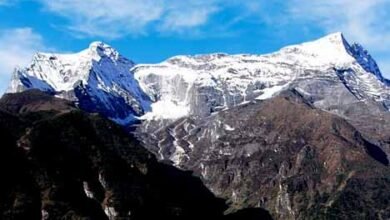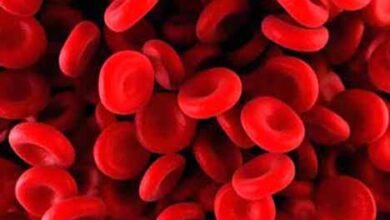
भूगोल से संबंधित- 74
| 1. How many kilometers does the Earth cover in one minute? = About 49 kilometers.
2. Earth rotates on its axis? = West to East. 3. The Earth rotates on its axis, who was the first to propose it? = Copernicus. 4. Where is the highest load on earth? = On the pole. 5. The maximum distance of a planet from the Sun in its orbit is called? = Apsour. 6. Who is also called a fossil planet? = Moon. 7. What is the diameter of the moon? = 3,480KM. 8. What is the mass of the Earth’s mass of Moon? = 81st. 9. How long does the Moon revolve around the Earth? = 27 days. 10. Which planet is labeled as ‘Red Star’? = Tue. 11. The asteroid is located between = Jupiter and Mars. 12. Which planet is closest to the Sun? = Wed. 13. Who is the nearest planet to Earth? = Venus. 14. Who is also called the star of dawn? = Venus. 15. Which is the largest planet in the solar system? = Jupiter. 16. Who is the star closest to the Earth after the Sun? = Proxima. 17. The United States sent a spacecraft named Galileo on October 19, 1989, to search for which planet? = Jupiter planet. 18. In which year was the international date line determined? = In the year 1884. 19. Which day is the longest day in the Northern Hemisphere? = 21 June. 20. Which day is the shortest in the Northern Hemisphere? = 22 December. 21. Which is the hottest place in the world? = Al Azizia. 22. Which is the coldest continent in the world? = Antarctica Continent. 23. Which is the coldest place in the world? = Plato Station – Antarctica. 24. Which is the coldest place in India? = DrasLadakh. 25. Which geographer described the shape of India as a kite? = Strebo (GreekGeographer). 26. Which is the largest wall in the world? = China Wall. 27. Who is called the lighthouse of the ocean? = Stromboli Volcano. 28. Which is the country with the most volcanoes? = Indonesia. 29. A country where there is not a single volcano? = Australia. 30. How many types of volcanoes are there? = (1) Awakened (active) volcano (2) Dormant volcano (3) Dead (calm) volcano. 31. Which is the highest volcano in the world? = Ohosdel Salado (Argentina, Chile). 32. Which is the lowest volcano in the world? = Acancagua (Chilli). 33. Most active volcanoes on Earth belong to which ocean? = Pacific Ocean. 34. Which is the longest river in the world? = Nile. 35. Which is the world’s longest tributary? = Amazon River. 36. Which is the world’s widest river? = Madeira. 37. From where does the river Ganga originate? = Gangotri Glacier of Uttarakhand. 38. What causes tides in the oceans? = Moon effect. 39. Who propounded the continental displacement theory of mountain formation? = Wegner. 40. Who proposed progressive wave theory in relation to the origin of tide and ebb? = William Wavell. ======== ========== ============ ====== 1. एक मिनट में पृथ्वी कितने किलोमीटर की दूरी तय करती है? = करीब 49 किलोमीटर. 2. पृथ्वी अपने अक्ष पर घूमती है? = पश्चिम से पूर्व की ओर. 3. पृथ्वी अपनी धूरी पर घूमती है, यह सर्वप्रथम किसने प्रतिपादित किया था? = कॉपरनिकस ने. 4. पृथ्वी पर सबसे अधिक भार कहाँ पर होता है? = ध्रुवो पर. 5. एक ग्रह की अपने कक्ष में सूर्य से अधिकतम दूरी को कहा जाता है? = अपसौर. 6. किसको जीवाश्म ग्रह भी कहा जाता है? = चंद्रमा. 7. चंद्रमा का व्यास कितना है? = 3,480KM. 8. चंद्रमा का द्रव्यमान पृथ्वी के द्रव्यमान का कितना भाग है? = 81वां. 9. चंद्रमा पृथ्वी का चक्कर कितने समय में लगाता है? = 27⅓दिनों में. 10. किसे ग्रह को ‘लाल तारा ‘ की संज्ञा दी जाती है? = मंगल. 11. क्षुद्र ग्रह किसके बीच में स्थित है? = बृहस्पति और मंगल. 12. कौन-सा ग्रह सूर्य के सबसे नजदीक है? = बुध. 13. पृथ्वी का सबसे निकटम ग्रह कौन है? = शुक्र. 14. किसे भोर का तारा भी कहा जाता है? = शुक्र. 15. सौरमंडल का सबसे बड़ा ग्रह है? = बृहस्पति. 16. पृथ्वी के सबसे निकट का तारा सूर्य के बाद कौन है? = प्रॉक्सिमा. 17. संयुक्त राज्य अमेरिका ने किस ग्रह की खोज के लिए गैलीलियो नामक अंतरिक्ष यान 19 अक्तूबर, 1989 कोभेजा था? = बृहस्पति ग्रह. 18. अंतर्राष्ट्रीय तिथि रेखा का निर्धारण किस वर्ष किया गया था? = वर्ष 1884 में. 19. उत्तरी गोलार्ध में कौन-सा दिन सबसे लंबा दिन होता है? = 21 जून. 20. उत्तरी गोलार्ध में कौन-सा दिन सबसे छोटा होता है? = 22 दिसंबर. 21. दुनिया का सर्वाधिक गर्म स्थान कौन-सा है? = अल अजीजिया. 22. दुनिया का सबसे ठंडा महाद्वीप कौन-सा है? = अंटार्कटिका महाद्वीप 23. दुनिया का सबसे ठंडा स्थान कौन-सा है? = प्लेटो स्टेशन – अंटार्टिका. 24. भारत में सबसे अधिक ठंड वाला स्थान कौन-सा है? = द्रास लद्दाख. 25. किस भूगोलवेत्ता ने भारत की आकृति पतंग जैसी बताई थी? = स्ट्रेबो (यूनानी भूगोलवेत्ता). 26. विश्व की सबसे बड़ी दीवार कौन-सी है? = चीन की दीवार. 27. सागर का प्रकाश स्तंभ किसे कहा जाता है? = स्ट्रांबोली ज्वालामुखी. 28. सबसे अधिक ज्वालामुखी वाला देश कौन-सा है? = इंडोनेशिया. 29. एक ऐसा देश जहां पर एक भी ज्वालामुखी नहीं है? = आस्ट्रेलिया. 30. ज्वालामुखी कितने प्रकार के होते हैं? = (1) जागृत (सक्रिय) ज्वालामुखी (2) प्रसुप्त ज्वालामुखी (3) मृत्य (शांत) ज्वालामुखी. 31. विश्व का सबसे ऊंचा ज्वालामुखी कौन-सा है? = ओहोस डेल सलाडो (अर्जेंटीना,चिली). 32. विश्व का सबसे नीचा ज्वालामुखी कौन-सा है? = एकांकागुआ (चिल्ली). 33. पृथ्वी पर अधिकांश सक्रिय ज्वालामुखी किस महासागर से सम्बन्ध रखते हैं? = प्रशान्त महासागर. 34. विश्व की सबसे लंबी नदी कौन-सी है? = नील नदी. 35. विश्व की सबसे लंबी सहायक नदी कौन-सी है? = अमेज़न नदी. 36. विश्व की सबसे चौड़ी नदी कौन-सी है? = मेडिरा. 37. गंगा नदी की उत्पत्ति कहाँ से होती है? = उत्तराखंड के गंगोत्री हिमनद. 38. महासागरों में उठने वाले ज्वार-भाटा का कारण होता है? = चन्द्रमा का प्रभाव. 39. पर्वत निर्माण संबंधी महाद्वीपीय विस्थापन सिद्धांत का प्रतिपादन किसने किया था? = वेगनर. 40. ज्वार-भाटा की उत्पत्ति के सम्बन्ध में प्रगामी तरंग सिद्धान्त का प्रतिपादन किसने किया था? = विलियम वेवेल.
|





